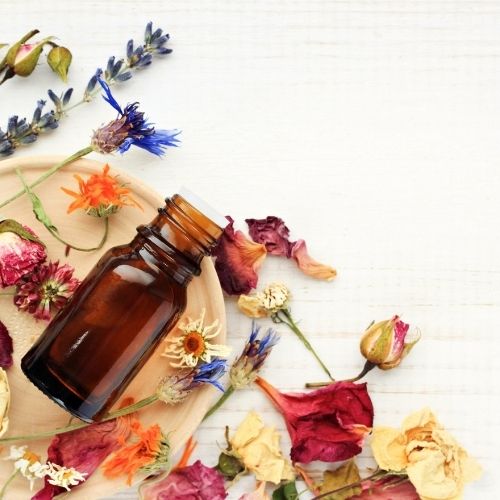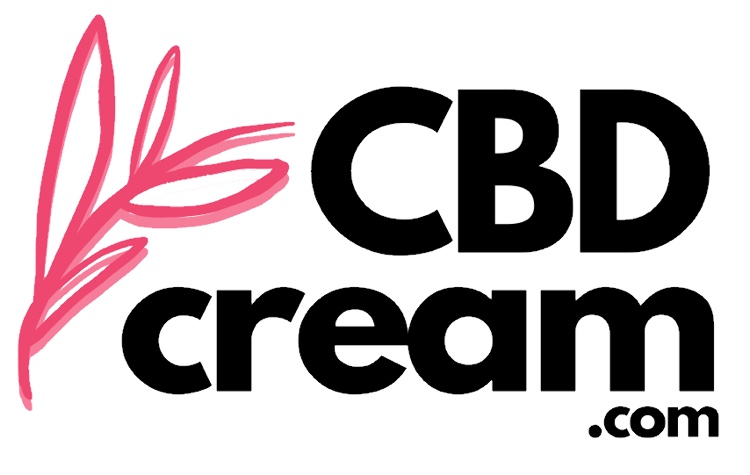Skincare products made with cannabidiol (CBD) are becoming more and more popular. CBD is a cannabinoid, a phytocompound that occurs naturally in the Cannabis sativa plant. Although this is a new area for scientists, evidence already suggests that CBD has multiple benefits, including relieving aches and pains.
Tetrahydrocannabinol (THC) is the chemical that produces the psychoactive “high” that cannabis is often sought for. Unlike THC, CBD does not change one’s behavior or state of mind.
So, What are the Best Ingredients for CBD Topicals?
There are many ways to get your CBD, but for people with skin conditions and chronic pain, CBD topicals are often the first choice over an oral product like CBD oil or gummies. A CBD topical is any lotion, cream, balm, skin oil, or salve that is infused with CBD for direct application to the skin.
Research on CBD is still just getting started, but we already know that CBD topicals are promising. For example, a 2016 study in rats found that topical CBD could help manage arthritis pain and inflammation. And the American Academy of Dermatology has said that people can use topical CBD products to treat eczema, acne, and psoriasis.
How effective any CBD product is depends on many things, including dose, source, and quality. But with CBD topicals, in particular, other ingredients like botanicals are really important, too.
This article offers a guide to the best natural ingredients for CBD topicals and what benefits they offer.

Aloe Vera
A succulent from the genus Aloe, the aloe vera plant grows in tropical climates abundantly. It has been used to treat many health issues for centuries as a medicinal, including for pain relief from sunburn.
Coconut Oil/Coconut MCT Oil
Coconut oil is an edible oil product made from the milk, meat, and wick of fruit from the coconut palm. Coconut oil is almost 100% fat, most of which is saturated, and no fiber or other nutrients except vitamin E.
MCT refers to medium-chain triglycerides, a type of fat, and MCT oil is usually extracted from coconut oil. This is because over 50% of coconut oil fat comes from MCTs. MCTs can also be found in other foods, such as dairy products and palm oil.
Beeswax
Honey bees of the genus Apis naturally produce beeswax. Specifically, worker bees form wax in their abdominal segments in scales and discard it in or near the hive. Chemically, long-chain alcohols and esters of fatty acids mainly comprise beeswax. Beeswax is a humectant and creates a protective layer on the skin. This helps protect the skin and keep it hydrated. Beeswax also sloughs away dead skin cells as a natural exfoliator.
Bergamot Oil
Produced by cells inside bergamot orange fruit rind, bergamot is a cold-pressed essential oil and a common flavoring and scent. Similar to a floral, light, sweet orange, bergamot essential oil boasts purifying, uplifting and calming benefits, and may relieve anxious feelings. If you like Earl Grey tea, CBD topicals with bergamot terpenes might be a great choice for you.
Olive Oil
A liquid fat derived from olives, olive oil is produced by pressing and extracting oil from whole olives. It is commonly used as a carrier oil and is rich in antioxidants and healthful monounsaturated fatty acids (MUFAs). Olive oil contains antioxidants that may help protect the body from various diseases and health conditions caused by cellular damage.
Shea Butter
Shea butter is a fat created as an extraction from the African shea tree nut. Raw, shea butter is ivory colored, although it may be dyed yellow. In topicals and cosmetics, shea butter serves as a moisturizer, although it is also edible and is used in cooking in some countries. Shea butter is an emollient that boosts skin moisture and hydrates and softens skin. It contains several fatty acids that improve the skin’s natural barrier, including oleic, linoleic, stearic, and palmitic acids, so shea butter guards the skin against environmental damage from pollutants and other sources.
Camphor
In nature, camphor is a flammable, clear, waxy solid with a strong fragrance. Found in the wood of a large East Asian evergreen tree called the camphor laurel and the related Kapur tree, it is a terpenoid. Today, most camphor is in powder form and synthetic, but in any form, it is an FDA-approved treatment for skin irritation, soreness, and cough. Camphor is commonly found in CBD topicals for pain thanks to its cooling effects.
Menthol
Menthol is a monoterpenoid, organic compound, either obtained from the oils of peppermint, corn mint, or other mints or made synthetically. Menthol produces a cooling sensation on the skin and is often used to treat minor throat irritation due to its counterirritant and local pain-relieving qualities. This ingredient is in some of the best CBD creams for pain.
Arnica
The genus Arnica includes herbaceous, perennial plants that grow in the US and Europe in the sunflower family. Arnica is often used in pain relief creams and topicals to treat aches, sore muscles, bruises, and swelling.
Jojoba Oil
Jojoba oil contains vitamin E in its natural form. This nourishing, antioxidant vitamin supports skin health, and many people use jojoba oil as a remedy for dry skin, acne, and many other skin conditions.
Peppermint
Peppermint is a hybrid mint and a popular traditional remedy with calming effects. People use peppermint to treat menstrual pains, flatulence, nausea, diarrhea, nerve and muscle pain, depression-related anxiety, indigestion, the common cold, and IBS.
Eucalyptus
Eucalyptus oil is derived from a fast-growing evergreen tree found in Australia. Eucalyptus essential oil is used to reduce symptoms of colds, coughs, asthma, nasal congestion, and as an insect repellant. This is also a specific ingredient for skin, with skin ulcers and arthritis benefitting from topical application.
FAQs about CBD Cream and Other CBD Topicals
Is CBD legal?
It depends on where you are, and what the source of the CBD is. Hemp-derived CBD products with less than 0.3% THC are legal federally. However, they still may be illegal under the laws of some states. CBD products derived from marijuana are illegal federally. However, in recreational states, they are legal. To be sure no matter where you go, check local laws. And remember, nonprescription CBD products, might be labeled inaccurately, and the Food and Drug Administration (FDA) has approved just one CBD-based drug and no CBD topicals.
What is topical CBD cream?
Brands often add CBD hemp extract to hemp seed oil or other carriers, so they can use them as ingredients in skincare products. Any such infused skincare product is a CBD skin cream or CBD topical.
What do CBD topicals do?
Research indicates that CBD topicals may help treat some skin issues due to their anti-inflammatory properties. CBD skin cream may also help treat joint pain. Compared to orally consumed products such as CBD gummies or tinctures, CBD topicals may be harder to dose.
Is CBD cream THC-free?
The most common type of CBD skin cream uses broad-spectrum CBD, although which type is best is a matter of personal preference. Broad-spectrum CBD contains most of the cannabinoids, but no THC. There may be hundreds of cannabinoids in the body, but there are most definitely dozens.
The other two common forms of CBD are full-spectrum CBD and CBD isolate. These are very different products for people with different concerns and goals. CBD isolate is pure CBD, with none of the dozens of other cannabinoids, including THC. Full-spectrum hemp extract products contain all of the plant’s cannabinoids, including trace amounts of THC.
What is the endocannabinoid system?
Every mammalian body, including the human body, contains an endocannabinoid system (ECS). This is a complex network of chemical messengers or neurotransmitters and cannabinoid receptors. The ECS is responsible for stasis in the body and contains many promising therapeutic targets. It is involved with the regulation of mood, pain management, sleep, and more.
Can CBD cream treat pain?
Research suggests that pain relief is one of the benefits of CBD. In the study from 2019, 94% of participants reported reduced chronic pain. A 2015 review found that CBD may also have anti-inflammatory qualities.
A 2016 study found that topical CBD reduced inflammation and pain. And a randomized, controlled trial from 2020 suggests that topical CBD may relieve peripheral neuropathy pain, cold, and itching sensations.
Additional research indicates that topical CBD may help treat muscle and joint pain associated with other problems, such as migraines.
Can CBD topicals help skin?
Yes. Research from 2019 shows that CBD ointment is an effective and safe treatment for people with inflammatory skin conditions. And the American Academy of Dermatology Association (AAD) says that as an anti-inflammatory, topical CBD may be a useful treatment for psoriasis, acne, and eczema.
TMD, jaw pain, and CBD
Research from 2019 shows that CBD products may help people with jaw stiffening, muscle aches, and pain from temporomandibular disorder (TMD).
Does CBD have side effects?
CBD is generally safe to use and mostly well-tolerated. A 2017 data review found that the most common side effects of CBD were diarrhea, tiredness, and a change in weight or appetite. However, the authors also say that compared to alternative medications used to treat the same conditions, quality products with CBD have fewer side effects.
Topical CBD products, or more specifically their other ingredients, are more likely to produce irritation. It is safest to do a patch test first.
According to the AAD, as with any skin cream, contact dermatitis can be a side effect of CBD skin creams. But the AAD also confirms that CBD creams cannot make a person feel high and contain little to no trace of THC.
Before starting any new CBD treatment, consult with a healthcare professional first, because it is possible for some prescription medications or supplements to interact with CBD.
How to choose CBD lotions, creams, and salves
The best indicators of a high-quality CBD brand are quality, safety, and transparency. Those indicators include: proof of third-party lab testing by an ISO 17025-compliant lab; CBD products made with US-grown hemp; a certificate of analysis (COA) and test results that verify no more than 0.3% THC, and no heavy metals, pesticides, or molds; product potency; certifications and manufacturing processes; overall ingredients; price; customer reviews, and other indicators of brand reputation and user trust, such as the existence of any Food and Drug Administration (FDA) warning letters.
What is the right dosage for CBD topicals?
Most CBD creams list the milligrams or mg of CBD the product contains. Low potency CBD creams deliver around 3 mg per recommended application, with high potency CBD skin creams running more like 8 mg per recommended application.
But what you’re using it for also matters. Applying high-potency CBD ointment or roll-on in a very small, localized area will allow you to use more of the product more often. But treating back pain over a large area with something like a CBD oil for massage may necessitate more restraint, just due to the amount of skin you’re covering and the product you’re using.
Are there environmental concerns about CBD creams?
CBD cream production including which CBD extraction processes and ingredients a skin cream brand uses can impact the environment. Some specific concerns include organic ingredients and products, cruelty-free, and non-GMO, which chemicals are used during extraction, and how and where the cannabis plant grows.
The exact farming process for organic hemp plants is also important. Beyond looking for USA-grown hemp, many consumers also prefer to buy from brands with labor-friendly practices. Some of the nation’s finest hemp comes from Kentucky and Colorado, and the growing industry is offering CBD users more choice in this area.
How much do CBD topicals cost?
High-end CBD skin creams can be expensive. When deciding how much value a CBD topical offers, determine how often you need to buy it and how it compares in price to alternatives. A higher price tag does not always signal more benefits or better quality.
How to use CBD skin cream
Apply CBD skin creams right to affected areas, and massage gently as needed to achieve both the surface level and deeper muscle level relief. Avoid using on broken skin because this can cause irritation. Depending on the CBD salve used, there might be cool, warm, or tingling sensations. Follow the guidance and directions on the label and packaging.
What is the difference between CBD cream and other topicals like CBD lotion or CBD balm?
There is a significant difference between CBD ointments and other topical products. To get the best results, try to get the right topical for your skin and treatment goals.
The primary difference in most cases is that ointments are roughly 80% oil, and therefore contain the highest fat content. This is why they feel greasier and stay on the skin longer, resisting evaporation, and ensuring optimal product absorption.
However, for some areas of the skin like the face, a different preparation such as a cream or lotion might be better. Lotions tend to be water-based, while creams are more likely to be oil-based.

Although this is, as always, a matter of personal preference and choice, there is also a lot of evidence out there to consider when it comes to CBD topicals. Different ingredients can help offer your skin a range of different benefits, so read the label and maximize your results.


